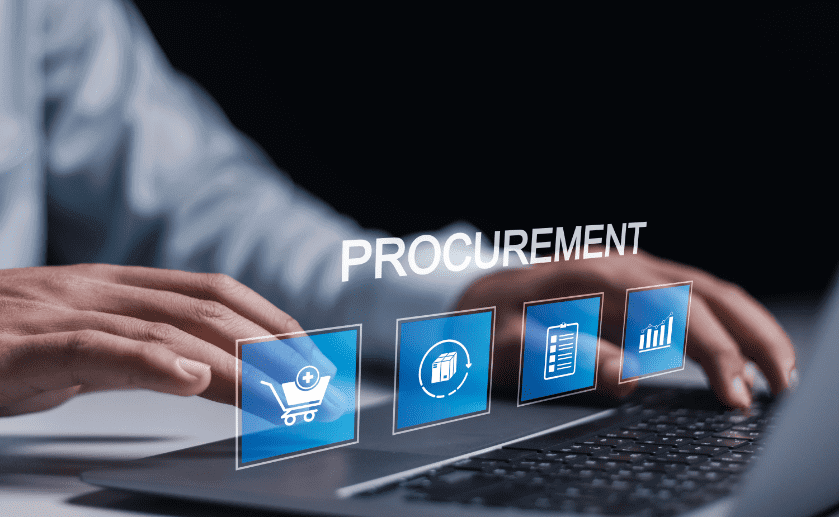Procurement Vs Purchasing: Are they the same?

For small companies, procurement and purchasing are often denoted as the same process and used interchangeably. However, large companies have separate procurement and purchasing functions when acquiring goods and services. Although they might appear the same, there is a world of difference between procurement and purchasing. Let’s understand the key difference between the two terms and realise their potential to impact an organisation’s bottom line.
What Does Procurement Mean?
Procurement is an end-to-end process of acquiring goods, services, or works from a supplier, manufacturer, or third party; all activities before purchasing fall under procurement. This includes everything from sourcing to payment, including making data-driven market analysis to make smart purchases at a reasonable price.
For instance, if your construction project requires some new materials, procurement involves:
- Identifying the specific quantities and qualities
- Researching different suppliers to find the best ones
- Negotiating contracts with chosen suppliers
- Formalizing purchase orders to each supplier
- Receiving and inspecting materials as per the required standards
Also Read: Redefining Procurement: Everything you need to know in 3 steps
What is Purchasing?
If you see buying vs procurement processes in a large company, you will know purchasing is a part of the procurement process. It involves buying goods or services as per the pre-decided procurement strategy. The typical ensures the day-to-day operations of a business run smoothly.
Here is the breakdown of key activities involved in the purchasing process:
- Issuing purchase orders to selected suppliers
- Tracking and expediting outstanding orders from suppliers
- Receiving products and services
- Verifying the quality of delivered items
- Processing payment to the supplier post verifying invoices against received items
- Updating inventory levels with arrived stocks
What are the Similarities Between Purchasing and Procurement?
While procurement and purchasing refer to two distinct roles, they do share some similarities.
- Both contribute to acquiring goods and services
- Both involve finding reliable vendors and building strong relationships with them
- Both require smooth financial management, whether it’s about issuing purchase orders or invoices for payment to suppliers.
- Both focus on strategic sourcing and negotiations for long-term cost benefits
That said, both processes work toward the same goal: ensuring the company gets supplies or services at the best possible value.
Now, let’s understand some fundamental buying vs procurement differences on the basis of certain common metrics.
Purchasing Vs Procurement: Key Differences
Procurement involves a lot of decision-making, including purchasing as a part of its procedure. Purchasing is a subset of the procurement procedure. It is transactional and short-term. The process majorly deals with purchasing and receiving goods or services on the basis of a pre-defined procurement strategy. On the other hand, procurement deals with the entire process of acquisition, starting from identifying the need to build a good supplier relationship for long-term benefits. Procurement takes into account the big picture. The strategy focuses on building good supplier relationships the benefit of which will positively impact a company’s bottom line for months or even years.
For instance, if you’re running a bakery, procurement involves:
- Identify raw material needs based on sales and holidays
- Researching different flour mills by comparing price, quality, and reliability
- Engaging multiple suppliers and maintaining a healthy relationship to avoid disruptions like harvest failures
- Negotiating contracts with chosen suppliers to secure long-term deals at a good price
- Keep backup suppliers in hand to handle emergencies
On the other hand, the purchasing activities will include:
- Issuing purchase orders to specific suppliers as per the procurement strategy for the exact amount of flour needed for the next week’s production
- Tracking orders and ensuring the deliveries arrive on time as per the purchase order
- Matching deliveries against purchase orders and processing invoices for payment
Let’s summarize the difference between procurement and purchasing side by side for better understanding.

Importance of E-procurement
Traditional procurement procedures involve making a lot of decisions based on data on past purchases, supplier performance, and market trends. There are a number of stakeholders involved in different departments. Each department and its processes demand meticulous documentation. Moreover, the entire procurement cycle can last for months or even can go on repeating year after year.
At times, it becomes challenging to manage and streamline every bid, invoice, and purchase in a smooth manner. This is where e-procurement comes in as an ideal solution. By using e-procurement solutions, businesses can add more efficiency to both procurement and purchasing procedures.
Moglix leveraged robust e-procurement solutions for one of the leading international vaccine makers of India to streamline its fragmented supplier base and volatile monthly inventory spend to enable 16 plants for JIT delivery of MRO goods.
Recommended reading: How e-procurement is helping businesses outshine traditional ERPs
Prospective Insights
Procurement and purchasing are interconnected processes. The latter is a subset of the former, and their systematic management sets the base for a reliable supply chain network. As procurement is a continuous process, even a few small human errors in analysis or predictions can significantly impact purchasing power in the long run. In this regard, beyond the purchasing vs. procurement debate, opting for an ideal e-procurement solution can help businesses gain a competitive edge with ease.
Looking to manage your procurement and purchases with ease? Leverage Moglix Procurement Solutions today!
